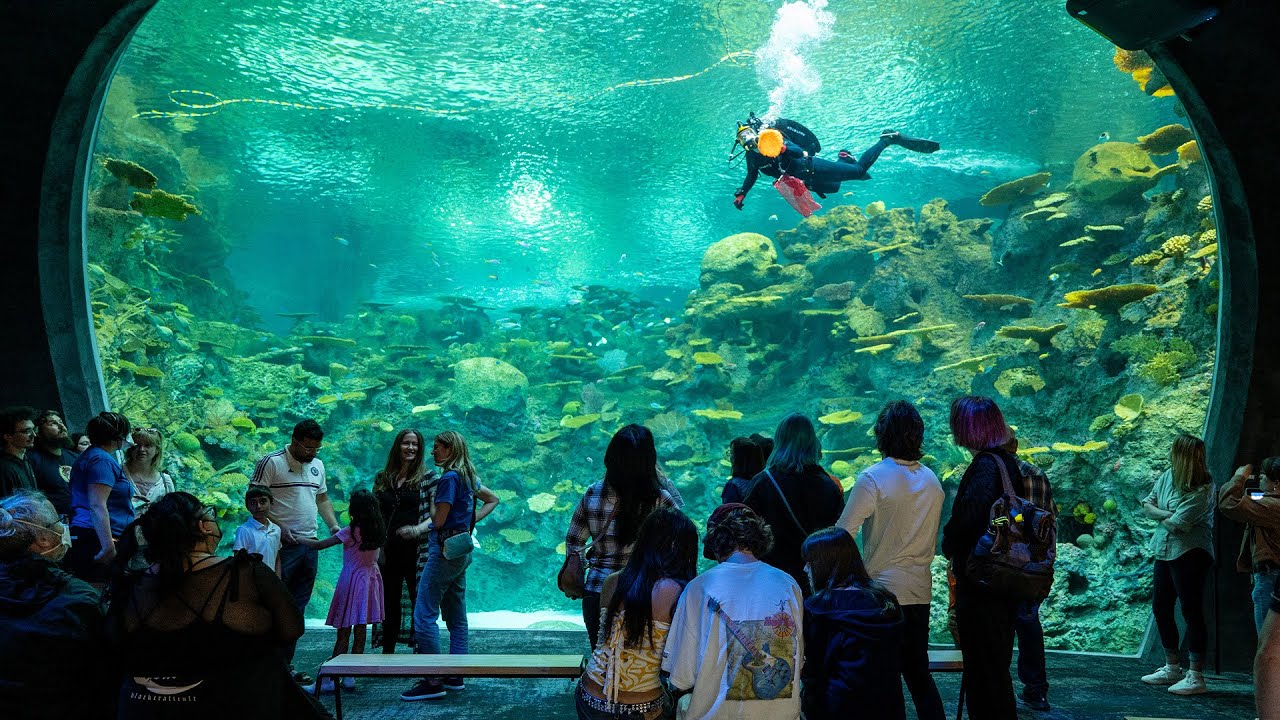- Overview of the Ocean Pavilion: Architecture and Design
- Marine Biodiversity Exhibits and the Importance of Species Conservation
- Interactive Learning and Educational Programs
- Ethical and Practical Aspects of Zoo Management
- Contribution to Global Wildlife Conservation Initiatives
The Ocean Pavilion stands as a beacon of modern zoo management and marine conservation. Open to the public, it offers a visually striking and environmentally sound structure designed to house a diverse array of marine life. Developed with both aesthetic appeal and sustainable principles, the Pavilion integrates advanced architectural techniques and cutting-edge technology to minimize environmental impact while maximizing visitor experience.
The building’s structure boasts a range of innovative features including state-of-the-art water filtration systems and energy-efficient lighting. These innovations do more than provide a stunning visual experience—they support the Pavilion’s broader mission of sustainability. Recycled materials and renewable energy sources further enhance the Pavilion’s commitment to eco-friendly practices, setting a new standard for modern zoological facilities.
At the heart of the Ocean Pavilion is its commitment to showcasing a wide array of marine biodiversity. From vibrant coral reefs teeming with tropical fish to deep-sea exhibits featuring bioluminescent creatures, each tank is carefully curated to replicate the natural habitats of its inhabitants. More than just an aesthetic choice, these exhibits play an essential role in educating the public about marine ecosystems and the importance of conserving them.
One of the most unique aspects of the Pavilion is its resident species conservation programs. By focusing on both common and endangered marine species, the facility aims to promote awareness and support for global conservation efforts. Innovative displays accompanied by detailed information boards educate visitors on the threats facing these ecosystems, such as overfishing, pollution, and climate change, as well as specific measures they can take to contribute to preservation efforts.
Education is a cornerstone of the Ocean Pavilion’s mission. To this end, the facility offers a range of interactive learning programs designed to engage visitors of all ages. Interactive touch pools allow younger visitors to get up close and personal with marine creatures like starfish and sea cucumbers, while high-tech augmented reality displays provide deeper insights into marine biology for older guests.
These programs are essential for fostering a deeper understanding of marine life and the troubling issues affecting these environments. School groups are frequent visitors, benefitting from tailored educational packages that complement classroom lessons with real-world experiences. Professional development workshops for teachers and marine biologists further bolster the Pavilion’s educational outreach, emphasizing the broader impact of learning and conservation efforts.
Ethical considerations are fundamental in the management of modern zoological facilities like the Ocean Pavilion. Each aspect of animal care is carefully monitored by a team of marine biologists and veterinarians. These professionals ensure that all species receive the highest standard of care, from diet and medical needs to environmental enrichment. The Pavilion adheres to stringent welfare guidelines set forth by international zoological advisory bodies, ensuring that all practices not only meet but exceed established standards.
Modern zoo management also extends to visitor experience. The Pavilion employs real-time monitoring and analytics to manage visitor flow, ensuring that all guests have a comfortable and engaging experience without causing stress to the animals. Digital kiosks and mobile apps provide real-time information on exhibit schedules and educational programs, allowing visitors to plan their visit more efficiently and enrich their learning experience.
Beyond its immediate educational and conservation missions, the Ocean Pavilion has garnered international recognition for its contributions to global wildlife conservation. Collaborations with renowned marine institutes and ongoing research initiatives play a crucial role in understanding and protecting marine ecosystems worldwide. The Pavilion also serves as a genetic reservoir for endangered species, participating in breeding programs designed to strengthen global populations.
Additionally, the Pavilion’s involvement in coral restoration projects contributes to the rehabilitation of damaged reef systems, further underscoring its role in broader conservation efforts. Programs like these are critical as coral reefs face increasing threats from climate change and human activity.
The Ocean Pavilion is more than just a public attraction. It operates as a multifaceted educational institution committed to the preservation and appreciation of marine life. Its innovative design and ethical practices are a testament to what is achievable in the fields of zoology and wildlife conservation. Through a combination of cutting-edge technology, dedicated care, and educational outreach, the Pavilion stands as a model for future endeavors in the realm of animal conservation and public education.
*****
Source Description
The Seattle Aquarium’s Ocean Pavilion expansion is o-fish-ally open! Immerse yourself in warm, bright Coral Triangle ecosystems. Connect with sharks, rays, schooling fish and more. Journey to the far reaches of the ocean through 360-degree video. Experience one of North America’s newest and most unforgettable family experiences without leaving the Pacific Northwest. Video credit: Devin Muñoz.
—–
Join us in our mission of Inspiring Conservation of Our Marine Environment!
Subscribe to our channel https://www.youtube.com/subscription_center?add_user=seattleaquarium
Visit us on the web: https://www.SeattleAquarium.org
Facebook: https://www.facebook.com/Aquarium.Seattle
Twitter: https://www.twitter.com/SeattleAquarium
Instagram: https://www.instagram.com/seattleaquarium


